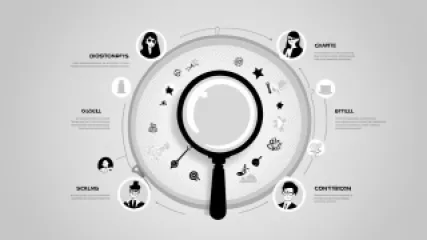The Ultimate Guide to Common Cognitive Distortion Types
The Ultimate Guide to Common Cognitive Distortion Types
Navigating the complexities of our thoughts can be a daunting task, but understanding the various types of cognitive distortions is a crucial step in gaining control over our mental processes. In this comprehensive guide, we'll delve into the common cognitive distortion types, exploring their underlying mechanisms, real-world examples, and strategies to overcome them. Whether you're seeking to improve your mental well-being, enhance your decision-making, or simply gain a deeper understanding of the inner workings of the human mind, this article is your ultimate resource.
What are Cognitive Distortions?
Cognitive distortions are systematic patterns of thought that can lead to inaccurate or skewed perceptions of reality. These distortions, which often arise from unconscious biases and faulty reasoning, can have a significant impact on our emotions, behaviors, and overall well-being. By recognizing and addressing these cognitive blind spots, we can improve our ability to think more rationally, make better decisions, and enhance our mental health.
The Common Cognitive Distortion Types
Cognitive distortions come in a variety of forms, each with its own unique characteristics and potential consequences. Let's explore the most common cognitive distortion types:
1. All-or-Nothing Thinking
Also known as "black-and-white" thinking, this distortion involves perceiving situations, events, or experiences as either completely positive or completely negative, with no middle ground. Individuals with this cognitive distortion tend to view the world in extremes, failing to recognize the nuances and gradations that often exist in reality. For example, someone who receives a single negative feedback at work may conclude that they are a complete failure, rather than acknowledging the positive aspects of their performance.
2. Overgeneralization
Overgeneralization occurs when individuals draw broad, sweeping conclusions based on a single or limited set of experiences. This cognitive distortion leads to the belief that a specific, negative event will continue to happen indefinitely or that a single characteristic or trait applies to an entire group of people. For instance, someone who has a negative interaction with a customer may conclude that "all customers are rude and unpleasant to work with," rather than recognizing that this experience was isolated.
3. Mental Filtering
Mental filtering involves selectively focusing on the negative aspects of a situation while ignoring or minimizing the positive elements. This distortion can lead to a skewed perspective, where individuals amplify the importance of the negative and dismiss the positive, resulting in a distorted view of reality. For example, a student who receives mostly positive feedback on a project but focuses solely on the one constructive criticism may conclude that their work was a failure.
4. Disqualifying the Positive
Closely related to mental filtering, disqualifying the positive is the tendency to reject or dismiss positive experiences, evidence, or attributes, regardless of their validity. Individuals with this cognitive distortion often have difficulty accepting compliments, achievements, or other positive feedback, instead attributing them to luck, external factors, or the person's own perceived flaws. This can lead to a persistent sense of inadequacy and self-doubt.
5. Jumping to Conclusions
Jumping to conclusions, also known as "mind reading" or "fortune-telling," is the cognitive distortion of making negative assumptions or predictions without sufficient evidence. This can manifest in two ways: mind reading, where individuals assume they know what others are thinking or feeling, and fortune-telling, where individuals predict negative outcomes will occur in the future. For instance, someone might assume a friend is mad at them without any clear indication, or believe that they will fail an upcoming exam despite having prepared adequately.
6. Catastrophizing
Catastrophizing is the tendency to exaggerate the potential negative consequences of a situation or event, often imagining the worst-case scenario. This cognitive distortion can lead to increased anxiety, stress, and a sense of helplessness, as individuals focus on the most extreme and unlikely outcomes. For example, someone who experiences a minor setback at work may immediately assume that they will lose their job and be unable to support themselves or their family.
7. Emotional Reasoning
Emotional reasoning is the cognitive distortion where individuals rely solely on their subjective emotional experiences to determine the objective truth or reality of a situation. This can lead to faulty conclusions, as our emotions do not always align with factual evidence. For instance, someone who feels ashamed or embarrassed about a situation may conclude that they have done something wrong or unacceptable, even if their behavior was entirely appropriate.
8. Should Statements
Should statements are rigid, demanding beliefs about how things "should" or "must" be, often accompanied by words like "should," "must," "ought to," or "have to." These distortions can create a sense of guilt, shame, or frustration when reality fails to match these inflexible expectations. For example, someone might believe, "I should always be able to handle everything on my own without any help," which can lead to feelings of inadequacy when they do require assistance.
9. Labeling and Mislabeling
Labeling and mislabeling involve assigning overly simplistic, global, or negative labels to ourselves or others, often based on a single characteristic or action. This cognitive distortion can contribute to prejudice, stereotyping, and a lack of empathy or understanding. For instance, someone who makes a mistake at work might label themselves as "incompetent" or "a failure," rather than recognizing that the mistake was a specific, isolated incident.
10. Personalization
Personalization is the cognitive distortion where individuals assume responsibility for negative events or outcomes that are clearly outside of their control. This can lead to feelings of guilt, shame, or a sense of inadequacy, even when the individual's actions or behaviors were not the primary cause of the situation. For example, someone might feel responsible for a natural disaster or the actions of others, despite having no direct influence over those events.
Strategies for Overcoming Cognitive Distortions
Now that we've explored the common cognitive distortion types, let's delve into strategies for overcoming these mental blind spots:
1. Develop Self-Awareness
The first step in addressing cognitive distortions is to develop self-awareness. Regularly reflect on your thought patterns, emotions, and behaviors, and try to identify any potential distortions that may be influencing your perceptions. Keep a thought journal or log your experiences to help you recognize and challenge these distorted thought processes.
2. Challenge Negative Thoughts
Once you've identified a cognitive distortion, actively challenge the negative thoughts or beliefs associated with it. Ask yourself questions like, "Is there evidence to support this thought?" "Am I jumping to conclusions?" "Is there another way to view this situation?" Engaging in this type of rational, objective analysis can help counter the distorted perspective and replace it with a more balanced, realistic understanding.
3. Practice Reframing
Reframing involves consciously shifting your perspective on a situation or event to a more constructive, helpful point of view. Instead of focusing on the negative, try to identify the positive aspects, the potential for growth or learning, or alternative interpretations that may be more accurate. Reframing can help you break free from the grip of cognitive distortions and foster a more resilient mindset.
4. Seek Objective Feedback
Relying solely on our own perceptions can reinforce cognitive distortions. Seek out trusted friends, family members, or professionals who can provide objective feedback and a different perspective on your thoughts, behaviors, and experiences. This outside input can help you recognize and correct any distorted thinking patterns.
5. Practice Mindfulness and Acceptance
Mindfulness, the practice of being present and non-judgmental, can be a powerful tool in overcoming cognitive distortions. By cultivating a greater awareness of your thoughts and emotions without immediately reacting to them, you can develop the ability to observe your thought patterns with detachment and respond more effectively. Additionally, practicing self-acceptance and compassion can help you avoid the pitfalls of overly critical or harsh self-judgments.
6. Seek Professional Support
For individuals struggling with persistent or severe cognitive distortions, seeking professional support from a mental health provider, such as a therapist or counselor, can be incredibly beneficial. These experts can help you identify the root causes of your distorted thinking, develop personalized coping strategies, and provide ongoing guidance and support in your journey towards mental well-being.
Conclusion
Cognitive distortions are complex mental patterns that can profoundly impact our thoughts, emotions, and behaviors. By understanding the common cognitive distortion types and actively working to address them, we can cultivate a more balanced, rational, and empowered mindset. Remember, the journey towards overcoming cognitive distortions is a continuous process, but with dedication, self-awareness, and the right strategies, you can break free from the grip of these mental blind spots and unlock your full potential.
As you embark on this journey of understanding and overcoming cognitive distortions, keep in mind that the ultimate goal is not to eliminate all distorted thoughts, but rather to develop the skills and resilience to recognize and effectively manage them. Cognitive distortions are a natural part of the human experience, and the key is to learn how to navigate them, rather than strive for an unattainable state of perfect thinking.
Remember, addressing cognitive distortions is not a one-size-fits-all process. Each individual's journey will be unique, and what works for one person may not work for another. Be patient with yourself, experiment with different strategies, and don't hesitate to seek support from mental health professionals or join a community of like-minded individuals who are also on a path of self-discovery and growth.
By embracing this process with compassion, curiosity, and a willingness to learn, you can cultivate a more balanced and empowered perspective, ultimately leading to improved mental health, stronger relationships, and a greater sense of fulfillment in your life.
Remember, the key cognitive distortion keywords to incorporate throughout the article are:
- common cognitive distortions
- cognitive distortion examples
- cognitive distortion techniques
- cognitive distortion resources
- cognitive distortion assistance
By weaving these keywords naturally into the article, we can ensure that the content is optimized for search engine visibility and provides readers with the information they're actively seeking.






